Babies are often fascinated by the simplest things, and ceiling fans are no exception. The constant motion of the fan blades can captivate a baby’s attention, leaving them mesmerized and even giggling with delight. But why do babies like ceiling fans?
The fact that newborns are drawn to moving items is one explanation for why do babies like ceiling fans. A baby’s curiosity may be aroused by the spinning ceiling fan because of the contrast that the fan blades make with the wall or ceiling. Additionally, babies may feel calmed by the fan’s regular motion, which may aid in promoting restful sleep.
While some may worry that a baby’s fascination with ceiling fan could be a early sign of autism, experts say it’s perfectly normal behavior. In fact, it’s not uncommon to see babies fixated on the spinning blades. However, it’s important to ensure that the ceiling fan is installed safely and out of reach of curious little hands.
The Fascination with Movement
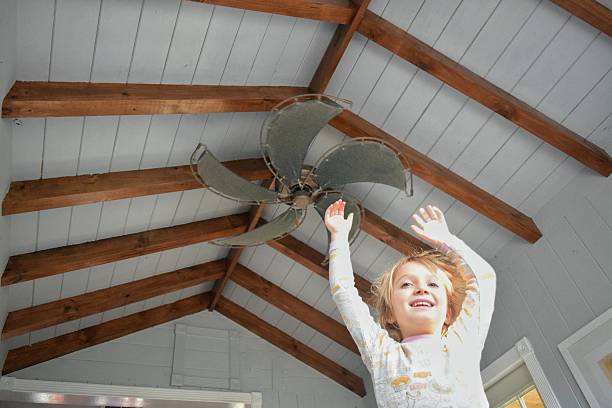
Baby stares at the movement of objects, and ceiling fan are no exception in baby’s room. The constant motion of the blades can capture a baby’s attention and hold it for extended periods. Here are some reasons why babies are drawn to the movement of ceiling fan.
Visual Tracking
Babies are born with an underdeveloped sense of vision. It takes a few months for their eyes to fully develop, and they are not able to track moving objects until about three months of age. The movement of the blades on a ceiling fan is similar to that of a mobile, moving object, which is a common toy for infants. By watching the blades move, babies can practice their eye contact and improve their ability to follow objects with their eyes.
High Contrast
Babies are also drawn to high contrast objects, which are easier for them to see. The blades of a ceiling fan often have a high contrast with the ceiling, making them stand out to a baby’s eyes. This contrast can make the blades more interesting and appealing to babies, leading to their fascination with ceiling fan.
Constant Movement
Babies are also attracted to objects that have constant movement, as it can be calming and soothing for them. The gentle, rhythmic movement of a ceiling fan can provide a comforting background noise and help lull babies to sleep. Additionally, the gentle breeze and constant motion can help distract babies from other stimuli, such as noise or light, that may be causing them discomfort.
Sensory Stimulation
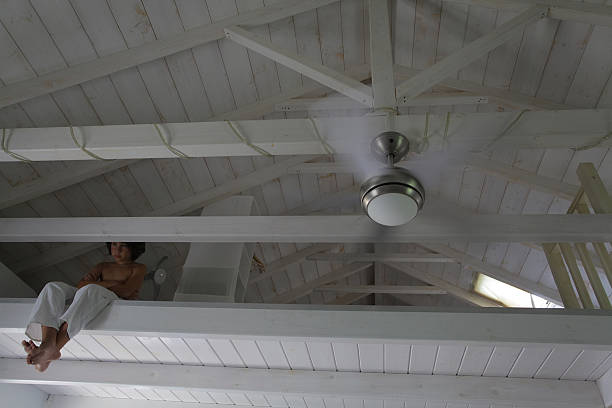
Babies are naturally curious and drawn to sensory experiences that help stimulate their rapidly developing brains. One of the reasons why babies love ceiling fans is because they provide a unique sensory experience that can be both calming and exciting for them.
Sensory Experiences
Ceiling fans can provide a range of sensory experiences for babies in baby’s room. The sound of the fan, the movement of the blades, and the feel of the air moving can all contribute to a sensory-rich environment. This can help babies develop their sensory processing skills and learn more about the world around them.
Visual Stimulation
Ceiling fans can also provide visual stimulation for babies. The contrasting colors of the fan blades against the ceiling, the movement of the blades, and the changing patterns of light and shadow can all be visually interesting and engaging for babies. This can help them develop their visual processing skills and learn more about the world around them.
Interaction
Ceiling fans can also provide a way for babies to interact with their environment and the people around them. For example, parents can use the a spinning ceiling fan as a way to play peek-a-boo or to encourage their baby to track the movement of the blades. This can help babies develop their social and communication skills and strengthen their bond with their caregivers.
Comfort and Soothing
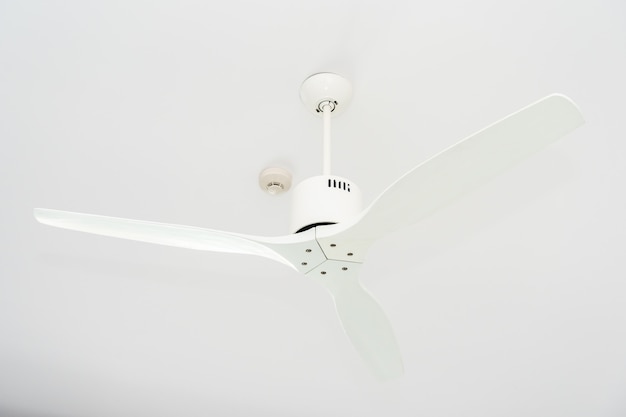
Babies love ceiling fans, and parents often wonder why. One of the reasons babies love ceiling fans is that they find them comforting and soothing. Here are some factors that make ceiling fans a source of comfort and soothing for babies.
White Noise
Ceiling fans produce a gentle humming sound that can be soothing and calming for babies. The sound of the fan creates a consistent background noise that can help babies fall asleep and stay asleep longer. The white noise produced by the fan can also help drown out other noises in the house, such as talking or the sound of the television.
Calming Effect
The gentle movement of the ceiling fan can have a calming effect on newborn babies too. The fan’s motion can mimic the gentle rocking motion that babies experience in the womb. This can be especially comforting for newborns who are used to being in a small, enclosed space. The movement of the fan can also help distract babies from any discomfort they may be feeling, such as teething or colic.
Temperature Regulation
Ceiling fans can help regulate the temperature in a room, which can make babies more comfortable. The fan’s circulation can help distribute cool air in the summer and warm air in the winter. This can help prevent overheating or getting too cold such as air conditioner, which can be uncomfortable for babies. However, it’s important to note that the fan should not be blowing directly on the baby, as this can cause dry skin and eyes.
Overall, the comfort and soothing provided by ceiling fans can be beneficial for babies. The white noise, calming effect, and temperature regulation can all contribute to a more peaceful and restful environment for babies to sleep and play in.
Developmental Aspects

Growth
Babies are born with underdeveloped senses, and their vision takes time to develop. Objects that have light, movement, and contrast can capture their attention, including ceiling fans. As they grow, their vision improves, and they become more interested in exploring their surroundings. Their fascination with ceiling fans may decrease as they become more mobile and can interact with other objects in their environment.
Learning
Babies are constantly learning and exploring their surroundings. Ceiling fans can provide a source of visual stimulation and help them develop their visual skills. They may be fascinated by the unique shapes and patterns created by the fan blades. Additionally, the movement of the fan can help babies learn about cause and effect, as they see that their actions can create a reaction.
Signs of Autism
Some parents may worry that their baby’s fascination with ceiling fans is a sign of autism. While it is true that some children with autism may have a heightened interest in certain objects or patterns, it is not a definitive sign of the disorder. Babies are naturally curious and interested in exploring their environment, and their baby staring fascination with ceiling fans is likely a normal part of their development.
In conclusion, babies’ fascination with ceiling fans is a totally normal interest and part of their development. As they grow and develop their visual skills, their interest in ceiling fans may decrease. Parents should not worry that their baby’s fascination with ceiling fans is a sign of autism, as it is a natural part of their learning and exploration.
Practical Considerations

Nursery Ceiling Fan
When choosing a nursery ceiling fan, safety is a top priority. The fan should be installed firmly and securely to prevent it from falling. Additionally, the fan should not have any dangling cords or chains that could pose a hazard to the baby. It is also important to ensure that the fan blades are not too close to the walls or any other objects in the room.
Air Circulation
Ceiling fans can help to circulate the air in a room, which can be beneficial for a baby’s health. Proper air circulation can help to reduce the risk of respiratory problems and improve the quality of the air in the baby’s room. However, it is important to ensure that the fan is not blowing directly on the baby, as this can cause discomfort and potentially lead to illness.
Cleanliness
It is essential to keep the baby’s nursery very clean to maintain a healthy environment for the baby. Ceiling fans can collect dust and other particles over time, which can be harmful to the baby’s respiratory system. It is important to clean the fan blades regularly to prevent the buildup of dust and other allergens. A clean fan can also help to improve the quality of the air in the room.
Overall, a ceiling fan can be a practical addition to a nursery. However, it is important new parents to consider safety, air circulation, and cleanliness when choosing and maintaining a fan. By taking these factors into account, parents can ensure that their baby is provided with a safe and healthy environment.
Conclusion
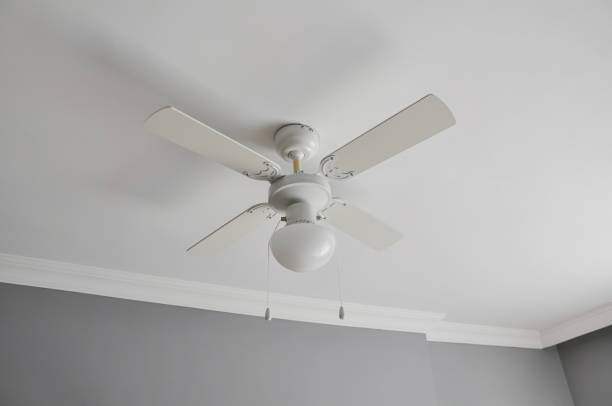
In conclusion, there are several reasons why do babies like ceiling fans. One theory is that the movement and sound of the fan blades provide a sense of action and excitement, which can be particularly appealing to babies who are seeking more playtime or interaction with their caregivers. Additionally, the unique shapes and dangling objects of ceiling fans may also catch a baby’s attention, providing them with visual stimulation.
Contrary to popular perception, there is no proof from science that a ceiling fan may give a baby a cold, a cough, or pneumonia. In reality, a ceiling fan can enhance air circulation and lower the chance of newborn babies developing respiratory problems.
Frequently Asked Questions
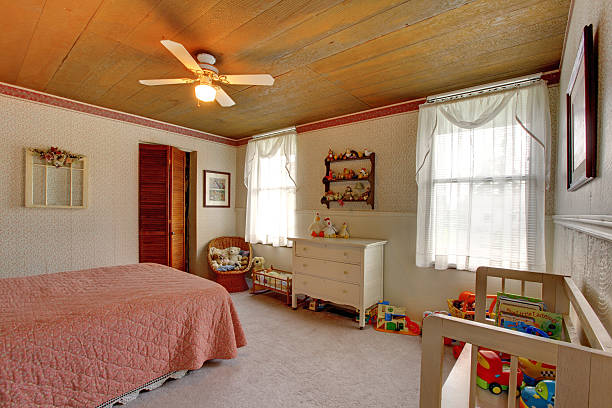
What attracts babies to ceiling fans?
Babies are attracted to ceiling fans because they provide a sense of action and excitement. The revolving fan blades and the unique shapes and dangling of inanimate objects can capture their attention. According to Marnie Baker, a pediatrician at MemorialCare Saddleback Medical Center in Laguna Hills, California, newborns are drawn to objects that have light, movement, and contrast due to their underdeveloped sense of vision. This includes ceiling fans, which can capture their attention.
Are ceiling fans good for babies?
Ceiling fans can be beneficial for babies as they help to circulate air in the room, which can promote better air quality and reduce the risk of Sudden Infant Death Syndrome (SIDS). However, it is important to ensure that the fan is set at a low speed and is not directed towards the baby’s crib.
Can staring at ceiling fans harm babies?
Staring at ceiling fans is not harmful to babies. There is no scientific evidence to suggest that looking at ceiling fans can cause harm to a baby’s eyes or affect their vision.
How do ceiling fans affect a baby’s sleep?
Ceiling fans can help babies sleep better as they help to circulate air in the room, which can promote better air quality during baby sleep and reduce the risk of Sudden Infant Death Syndrome (SIDS). The gentle humming sound of the fan can also create a soothing white noise that can help babies fall asleep faster and stay asleep longer.
What other things do babies like to look at?
Babies are drawn to objects that have light, movement, and contrast due to their underdeveloped sense of vision. This includes mobiles, toys with bright colors, and other objects that move or have interesting shapes.
Why do some babies become fixated on certain objects?
Babies can become fixated on certain objects as a way of exploring and learning about their environment. This first focus is a normal part of their development and can help them to develop their cognitive and motor skills. However, if a baby becomes overly fixated on a certain object, it is important to monitor their behavior and seek advice from a pediatrician if necessary.
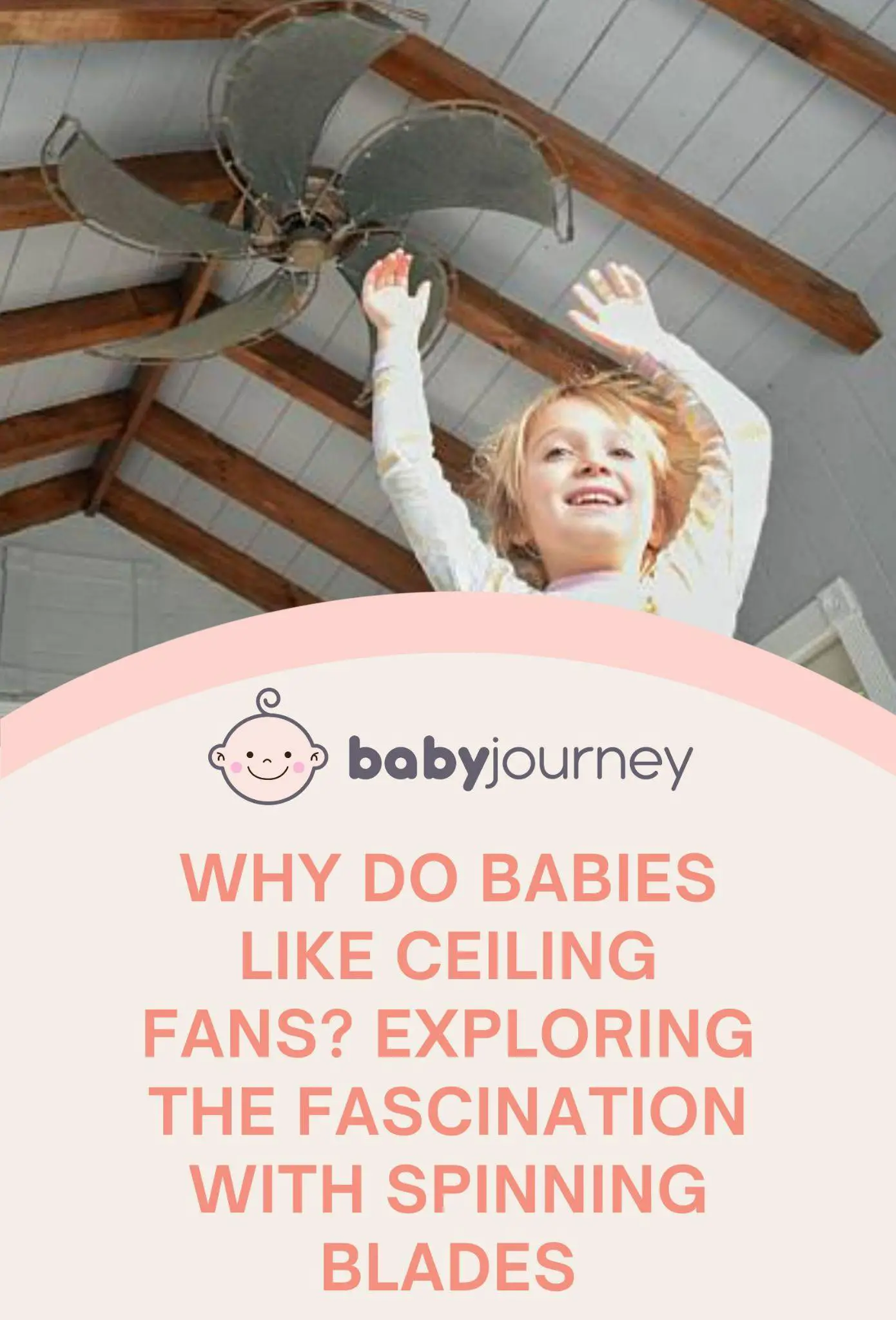

 PARENTING TIPS
PARENTING TIPS PREGNANCY
PREGNANCY BABY CARE
BABY CARE TODDLERS
TODDLERS TEENS
TEENS HEALTH CARE
HEALTH CARE ACTIVITIES & CRAFTS
ACTIVITIES & CRAFTS


